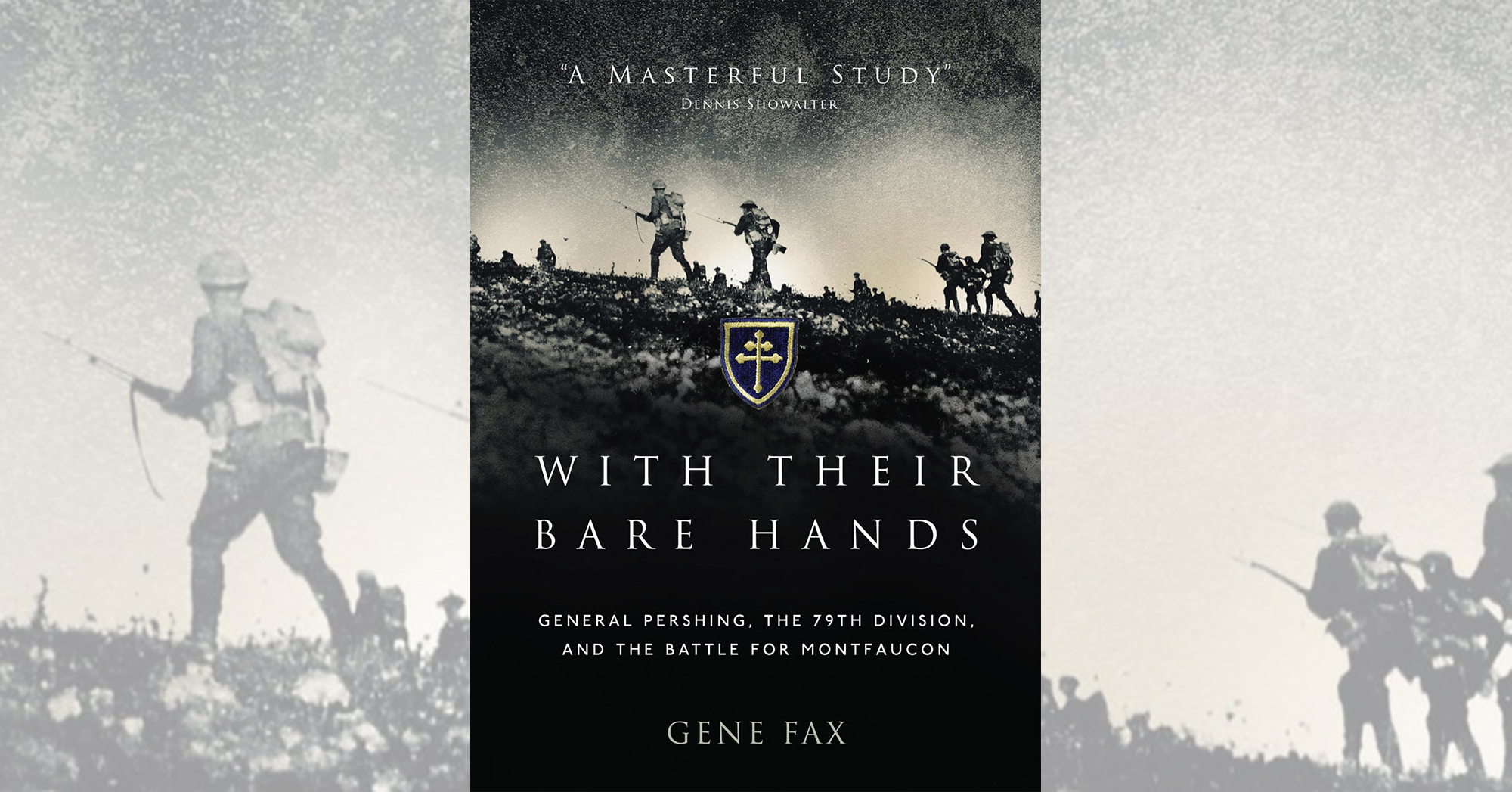With Their Bare Hands: General Pershing, the 79th Division and the Battle for Montfaucon, by Gene Fax, Osprey Publishing, Oxford, U.K., 2018, $22
Within a year of the spring 1917 U.S. entry into World War I, 2 million American doughboys had been deployed to France. Among them were the men of the 79th Division, raw recruits from the streets of Boston, Philadelphia and Washington, D.C., who were soon plunged into the hell of trench warfare. Commanded by Maj. Gen. Joseph E. Kahn, who’d spent the first two years of the war as a military observer in Germany, the 79th was within weeks of its arrival thrown into the most important and bloody battle of the Meuse-Argonne offensive—the attack on Montfaucon.
The plan proposed by American Expeditionary Forces commander Gen. John J. Pershing embraced a 20-mile sector held by the Germans since 1914. Replacing 200,000 weary French troops were 428,000 Americans by truck and a further 172,000 afoot. Moving by night, some 90,000 horses hauled up 3,000 guns and 40,000 tons of ammunition, all under the direction of brilliant young staff officer Col. George C. Marshall.
The Americans faced some of the most challenging terrain on the Western Front—undulating hills dominated by Montfaucon, beyond which lay the reputedly impenetrable Argonne Forest. Fax’s description of the terrain and German defenses makes one shudder all these decades later. At 2:30 a.m. on Sept. 26, 1918, Pershing, whose objective that day was 7.5 miles gained, ordered all 2,700 American guns to open fire. His artillery rained down shells for three hours on enemy headquarters, crossroads and observation posts before directly targeting the German front line.
Drawing on period documents and reports, as well as the letters and memoirs of those present, Fax transports the reader to the battlefield, where on that first day the Americans made it barely 4 miles from their start line. In a heavy rain at 0400 the following morning Pershing renewed the attack, finally taking Montfaucon—both the peak and the namesake tiny town—just before midday.
Unveiled in 1937 atop the high point of the ridge, a massive Doric column anchors the Meuse-Argonne American Memorial, the largest such U.S. war memorial in Europe. Reached by 234 steps, its observation deck provides a superb view across the battlefield, an especially moving sight for anyone having absorbed Fax’s epic account.
—David Saunders





